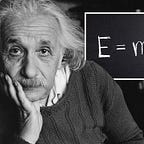History
The First Ever Nobel Prize in Physics
A Historic Milestone
The Royal Swedish Academy of Sciences grants the Nobel Prize in Physics annually to those who have made outstanding contributions to the field of physics for the betterment of humankind.
This esteemed award is one of the five Nobel Prizes established by Alfred Nobel’s will in 1895 and has been bestowed since 1901, along with the Nobel Prizes in Chemistry, Literature, Peace, and Physiology or Medicine.
During the Nobel Prize ceremony, the Nobel Prize in Physics traditionally takes precedence as the first award presented.
Wilhelm Conrad Röntgen’s Discovery of X-rays
Wilhelm Conrad Röntgen (1825–1923), a German physicist and mechanical engineer, made history when he accidentally discovered X-rays on November 8, 1895. While working with a cathode-ray tube in his laboratory at the University of Würzburg, he noticed a fluorescent glow on a nearby chemically coated screen when the tube was energized. This mysterious glow seemed to be produced by an unknown form of radiation that could penetrate solid objects.
Röntgen was astounded by this revelation and meticulously conducted further experiments to study this new phenomenon and the properties of these unknown rays. Due to the absence of typical light properties like reflection or refraction, he erroneously believed that these rays were distinct from light. He termed these radiation “X-rays” due to their mysterious nature.
To demonstrate his new findings, he captured the initial X-ray images, revealing the inner structures of metal objects and the bones within his wife’s hand.
Hence, the Nobel Prize in Physics 1901 was awarded to Wilhelm Conrad Röntgen “in recognition of the extraordinary services he has rendered by the discovery of the remarkable rays subsequently named after him.”
Practical Applications
Röntgen’s discovery had immense practical applications in medicine, allowing physicians to see inside soft tissues of the human body and visualize internal structures without invasive procedures. His groundbreaking work laid the foundation for the field of radiology and revolutionized medical diagnostics.
The practical applications of Röntgen’s discovery were immediately apparent. As soon as the following month in 1896, medical practitioners and scientists promptly started employing X-rays on patients to examine the skeletal system, the lungs, and other organs of the body. They could now detect fractures, tumors, and other internal abnormalities, saving countless lives and reducing the need for exploratory surgeries.
This marked the inception of radiology as a medical field.
In early 1896, shortly after Röntgen’s discovery, a French physicist, Antoine Henri Becquerel (1852–1908) was conducting experiments with phosphorescent materials and their exposure to sunlight and discovered radioactivity during the process. While investigating the properties of uranium salts, he serendipitously discovered that these salts emitted a form of radiation that could darken photographic plates, even when shielded from sunlight. This radiation, emitted by uranium salts, was not related to any external excitation, unlike the X-rays.
Becquerel further explored this phenomenon and demonstrated that uranium emitted a form of radiation that could penetrate through opaque materials, similar to X-rays. He referred to this radiation as “uranium rays” initially, but it was later termed “Becquerel rays.”
Becquerel received the 1903 Nobel Prize in physics “in recognition of the extraordinary services he has rendered by his discovery of spontaneous radioactivity” along with Pierre Curie and Marie Curie.
The emergence of X-rays and radioactivity marked the momentous scientific revolution that began at the end of the 19th century and extended into the early 20th century.
Thank you for reading this story, and see you again. If you have any thoughts, feedback, or suggestions, please feel free to leave a comment. Until we meet again, may your life be filled with success and happiness.
If you’d like to show your appreciation, you can treat me to a cup of coffee ☕️🙂.
